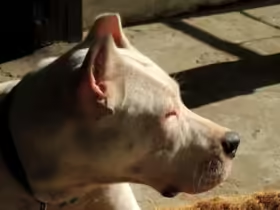Introduction
Cats are mysterious creatures, and one of their most enchanting behaviors is purring. Whether they’re nestled on your lap, lounging in a sunny spot, or even at the vet’s office, the soothing sound of a cat’s purr can be a source of comfort for both the cat and its owner. But why do cats purr? Is it always a sign of contentment, or is there more to it? In this blog, we’ll dive deep into the science behind cat purring, explore the various reasons why cats purr, and debunk some common myths about this fascinating feline behavior.
The Mechanics of Purring: How Do Cats Purr?
Before we delve into the reasons why cats purr, it’s important to understand how purring actually works. Unlike other vocalizations, such as meowing or hissing, purring is a unique sound that involves the cat’s entire body.
1. The Role of the Laryngeal Muscles
- The sound of purring originates in the larynx (voice box) and is controlled by the laryngeal muscles. These muscles rapidly contract and relax, causing a sudden separation of the vocal cords during both inhalation and exhalation.
- This action results in the production of a rhythmic sound, typically ranging between 25 and 150 Hertz (Hz), which is the frequency range associated with purring.
2. The Neural Oscillator Theory
- Scientists believe that the brain has a neural oscillator that sends repetitive signals to the laryngeal muscles, prompting them to vibrate and produce the purring sound.
- Unlike other vocalizations that are voluntary, purring appears to be a semi-autonomous process, meaning that cats can initiate it consciously but don’t need to think about maintaining it.
3. Involvement of the Diaphragm
- In addition to the laryngeal muscles, the diaphragm (the primary muscle used in breathing) also plays a role in purring. As the diaphragm moves in and out, it contributes to the characteristic sound by enhancing the airflow and resonance within the chest.
Why Do Cats Purr? The Various Reasons Behind Purring
Purring is often associated with contentment, but cats purr for many reasons. Understanding these reasons can provide valuable insights into your cat’s emotional and physical state.
1. Contentment and Relaxation
- Comfort and Security: The most common reason for purring is a state of relaxation and happiness. When a cat is in a comfortable environment, such as when being petted or lying in a favorite spot, it purrs as a sign of contentment.
- Mother-Kitten Bonding: Kittens begin purring when they are just a few days old, and this behavior helps them communicate with their mother. The purring of kittens reassures the mother that they are safe, while the mother’s purring helps to calm the kittens and guide them to her for nursing.
2. Healing and Self-Soothing
- Purring as a Healing Mechanism: Studies have shown that the frequency of purring (25-150 Hz) can have a therapeutic effect on cats. This frequency range is known to promote healing, reduce pain, and improve bone density, which may explain why cats often purr when they are injured or ill.
- Self-Soothing: Cats may also purr when they are anxious, frightened, or in pain as a way to calm themselves. The act of purring releases endorphins, which can help alleviate stress and discomfort.
3. Communication with Humans and Other Animals
- Solicitation Purring: Cats sometimes use purring as a way to communicate with their owners, especially when they want food or attention. This type of purring is often more insistent and may be combined with other vocalizations, such as meowing, to get the owner’s attention.
- Social Bonding: Cats may also purr when they are interacting with other animals, as a way to signal non-aggression and foster social bonding. This behavior is commonly observed in multi-cat households, where cats will purr while grooming each other.
4. Pain and Distress
- Purring in Response to Pain: While purring is often a sign of happiness, it can also be a response to pain or distress. Cats may purr when they are injured, ill, or even near death. In these cases, the purring is thought to serve as a coping mechanism to reduce pain and stress.
- Vets and Purring: Some cats purr during veterinary visits or medical treatments, which can be misleading. While it may appear that the cat is relaxed, it is more likely that the purring is a response to fear or discomfort.
The Evolutionary Purpose of Purring
Purring has likely evolved as a multifaceted behavior that serves several important functions for cats, both in the wild and in domestic settings.
1. Survival in the Wild
- Silent Communication: In the wild, purring allows mother cats to communicate with their kittens without drawing attention to themselves from predators. Unlike louder vocalizations, purring is a subtle sound that can convey reassurance without compromising safety.
- Injury Recovery: The potential healing properties of purring may also have provided an evolutionary advantage, helping wild cats recover more quickly from injuries and stay in good physical condition.
2. Domestic Cats and Human Interaction
- Strengthening Human-Cat Bonds: Over time, domestic cats may have adapted their purring behavior to strengthen their bond with humans. Cats that purr frequently and in response to human interaction are often more successful at eliciting care and attention from their owners.
- Enhancing Coexistence: Purring can also serve to enhance the human-cat relationship by making cats more appealing to humans. The soothing sound of a purring cat is often perceived as comforting and can help to foster a deeper emotional connection between cats and their owners.
Debunking Common Myths About Purring
There are several myths and misconceptions about why cats purr. Let’s set the record straight on a few of them:
1. Myth: Cats Only Purr When They Are Happy
- Reality: While cats do purr when they are content, they also purr in a variety of other situations, including when they are anxious, in pain, or seeking attention.
2. Myth: All Cats Purr
- Reality: Not all cats purr. Some big cats, such as lions and tigers, do not purr in the same way as domestic cats. The ability to purr is primarily seen in smaller felines, like domestic cats, bobcats, and cheetahs.
3. Myth: Purring Means a Cat Is Healthy
- Reality: Although purring can indicate a cat is relaxed, it is not always a sign of good health. Cats may purr when they are sick, injured, or experiencing pain.
The Benefits of Purring for Humans
Cats aren’t the only ones who benefit from purring; humans can also experience positive effects from being around a purring cat.
1. Stress Reduction
- Calming Effect: The rhythmic sound of purring can have a calming effect on humans, reducing stress and promoting relaxation. This is why many people find the presence of a purring cat soothing after a long day.
2. Lower Blood Pressure
- Health Benefits: Studies have shown that petting a purring cat can help lower blood pressure and reduce the risk of heart disease. The combination of tactile stimulation and the soothing sound of purring contributes to this effect.
3. Improved Mood
- Emotional Support: For many cat owners, the sound of their cat purring can lift their spirits and improve their mood. The bond between a cat and its owner, reinforced by purring, can provide emotional support and combat feelings of loneliness.
Conclusion
Purring is one of the most fascinating and multifaceted behaviors in cats. While it is often associated with contentment, purring can also serve as a form of communication, a self-soothing mechanism, and even a healing tool. Understanding the reasons behind your cat’s purring can deepen your bond with your feline friend and help you better respond to their needs. Whether your cat is purring to express happiness, seek attention, or cope with discomfort, this soothing sound is an integral part of what makes cats such beloved companions.











Leave a Reply